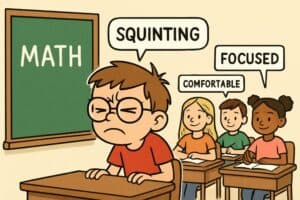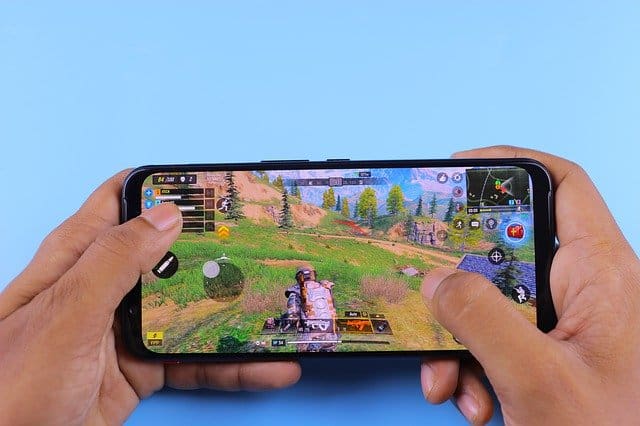The Link Between Vision and Learning
Clear vision is a cornerstone of a child’s success in the classroom. Since nearly 80% of the information children acquire in school is presented visually, any undiagnosed or untreated vision issue can hinder learning. Children depend heavily on their eyesight for activities such as reading, writing, and participating in classroom tasks. When vision problems interfere, it can lead to confusion, frustration, and an overall decline in academic performance. For families seeking guidance and specialized care, Kansas Family Optometry offers thorough pediatric eye exams, helping to ensure children’s vision is well-supported on their academic journey.
When one considers how essential clear vision is for interpreting and processing written words, images, and visual instructions, the importance of professional optometric care becomes clear. Without timely intervention, a simple issue like myopia may snowball into bigger academic and behavioral obstacles. Collaboration between families, international baccalaureate schools, and vision health professionals can dramatically impact a child’s educational experience.
Common Vision Problems in Children
Not all vision problems are immediately obvious. Some children adapt quietly to seeing poorly, not recognizing that other kids have a different visual experience. A few of the most prevalent vision conditions among children include:
- Refractive Errors: Myopia (nearsightedness), hyperopia (farsightedness), and astigmatism can affect how children see objects near and far, potentially interfering with reading, writing, and board work.
- Strabismus: This eye alignment issue, often called “crossed eyes,” can disrupt depth perception and cause double vision, making classroom navigation challenging.
- Amblyopia: Also known as “lazy eye,” amblyopia is marked by reduced vision in one eye due to poor visual development. If left untreated, it can impact both academic and physical activities.
These conditions often require timely diagnosis to prevent long-term learning difficulties. According to the Centers for Disease Control and Prevention, vision problems are among the most prevalent disabling conditions found in children, but they’re also some of the most treatable.
Behavioral Indicators of Vision Issues
Vision impairments don’t just affect academic performance—they can also influence how a child behaves. When visual tasks become hard or uncomfortable, children may react in often misinterpreted ways. Key behavioral indicators that could point to an underlying vision issue include:
- Inattention: Children who struggle to follow visual tasks might seem inattentive or easily distracted during lessons.
- Frustration: Repeated difficulty with reading or writing can lead to irritability, mood swings, or emotional outbursts.
- Avoidance: Kids may proactively avoid assignments that require visual effort, like reading aloud or participating in group activities.

Educators and parents sometimes interpret these symptoms as signs of ADHD or other learning disorders. In reality, a vision problem might be the underlying cause. Raising awareness among caregivers is an important step for early intervention and ensuring children receive the appropriate support.
Academic Challenges Stemming from Vision Problems
Struggling with vision affects specific areas of classroom performance. Among the most common challenges are:
- Reading Difficulties: Children with blurred or double vision often find reading exhausting, which can slow comprehension and reduce reading fluency.
- Writing Challenges: Visual issues sometimes result in poor handwriting and trouble copying information from the board, affecting grades and self-esteem.
- Reduced Classroom Participation: Kids might withdraw from group discussions or hands-on activities if they feel visually overwhelmed.
When these academic challenges go unrecognized, children may fall behind their peers and become increasingly discouraged with each school year. Resources like the Centers for Disease Control and Prevention provide valuable guidance for parents on signs to watch for and steps to take.
Identifying Vision Problems in Children
Spotting vision issues early is crucial for supporting children both academically and socially. Signs to watch for include:
- Frequent headaches or eye rubbing, especially after visual tasks
- Squinting or needing to get very close to see
- Holding reading materials unusually close or at arm’s length
- Short attention span during tasks requiring visual focus
Pediatricians and teachers are often the first to notice these warning signs, but comprehensive eye exams conducted by optometrists are critical for identifying underlying problems. The American Optometric Association recommends eye exams at six months, again at age three, before starting school, and regularly every two years thereafter.
Addressing Vision-Related Learning Challenges
Once a vision issue is diagnosed, intervention should be prompt and collaborative. Some of the most effective solutions include:
- Corrective Lenses: Prescription glasses or contacts are among the most common—and effective—ways to correct refractive errors.
- Vision Therapy: This optometrist-guided program of eye exercises and activities helps improve coordination, tracking, and focus.
- Classroom Accommodations: Changes like preferred seating, increased lighting, or visual aids can help children participate fully in classroom activities.
Partnerships among parents, teachers, and eye care professionals ensure children get the customized support they need to thrive.
The Importance of Regular Eye Exams
Regular eye exams are a key preventative tool in supporting long-term academic and behavioral success. Early detection and correction of vision issues can transform a child’s school experience, easing frustration and improving classroom engagement. By prioritizing pediatric eye health, families and educators can empower every child to reach their full potential, both academically and personally.
A holistic approach to education requires attention to every facet of a child’s development, including visual health. Together, communities and vision professionals can make a profound difference, ensuring that vision challenges never hinder a child’s learning or well-being.




